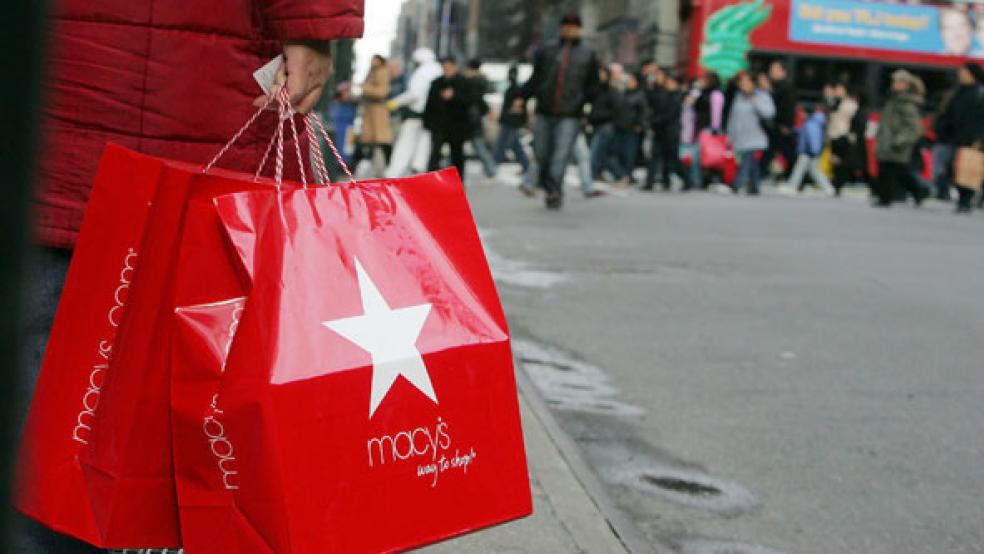The decorations are ready, the sales are set and the Black Friday deals will once again start earlier than ever. Welcome to another make-or-break holiday retailing season for discount retailers.

Take Wal-Mart Stores (WMT), for instance. The giant retailer lost a chunk of its market share to the dollar stores during the recession and finally saw some strong sales growth in the first half of 2012 only to see a slower gain in the third quarter. Now, as Wal-Mart tries to ramp up its profit margins, it is facing a triple whammy: a potential Thanksgiving strike by employees, fears that Americans are too wary about the economic challenges that lie ahead to spend heavily during the holiday shopping season and the need to compete with rivals in offering deals while still sustaining its margins.
It’s likely to get harder and harder for Wal-Mart and its rivals to pull off feats like that. Wal-Mart announced a profit of $1.08 a share last week for its third quarter. While that was up from 96 cents a share last year, and ahead of forecasts by 1 cent, revenue growth fell short of expectations, and same-store sales climbed only 1.5 percent, below the 4.6 percent analysts had anticipated.
Jharonne Martis-Olivo, retailing analyst at Thomson Reuters, points out that analysts believe the fourth quarter will be stronger and are now looking for 1.9 percent growth in same-store sales in the period, in large part because of the big incentives they will be offering to shoppers. As Martis-Olivo points out, the holiday season is becoming increasingly competitive, with retailers offering holiday deals earlier than ever before, being more aggressive with price-matching offers and providing extras, such as layaways or same-day pickup.
Some of the struggles that this group of retailers faces are the fault of the economy, as wage growth remains anemic or non-existent; the unemployment rate remains high and fuel prices are still at high levels. Now, with the fiscal cliff looming large on the horizon, anxiety is growing among consumers that their after-tax paychecks won’t be large enough to cope with credit card payments come January. A survey by Ipsos for RBC Capital Markets revealed that 60 percent of consumers said they intend to cut their holiday spending ahead of the fiscal cliff, while the National Retail Federation says it expects a slight dip in the number of people with plans to visit stores on Black Friday and the rest of the official kickoff to the holiday shopping season.
Some retailers among Wal-Mart’s peers are struggling with problems of their own making. JC Penney (JCP), for instance, embarked on a radically different business model and its new message has cost it the loyalty of consumers who love the idea of getting bargains every day. The result has been a disaster, with some analysts now questioning whether the century-plus old company can stay a going concern. (Martis-Olivo says Penney is likely to see same-store sales fall 15.9 percent in the fourth quarter.) Meanwhile, Martis-Olivo points out that analysts believe Sears (SHLD) needs a major restructuring if it is to woo customers by offering an enjoyable shopping experience.
Certainly, the pressure is on retailers like Wal-Mart and Target (TGT) to offer big deals, and it will be tough to balancer that against the need to maintain margins. For many chains, it may end up as a kind of tug-of-war between maintaining same-store sales levels and market share on the one side and, on the other, keeping margins at a reasonable level. Either way, this period – from this week until the end of December – is a make or break time for Wal-mart, Target, Kohl’s and all their rivals. Sales account for a fifth or more of all their sales for the year, and if they don’t do well, it will be hard for them to post respectable year-end earnings.
Investing in these stocks today may be a risky proposition as a result – at least, you’d be gambling that they pull it off and that price conscious consumers are less cautious than many fear they have become. In contrast, you may want to look at specialty retailers: apparel stores, like Gap Stores (GPS) or Ann, Inc. (ANN), which owns and operates the Ann Taylor and Loft chains, or footwear stores like Foot Locker (FL) or Finish Line (FINL), for instance. Even if consumers scale back on buying yet another flat-screen TV or other appliance, they’ll be snapping up on-trend merchandise that these apparel stores have been delivering steadily all year, or buying the latest athletic footwear for their kids.
These specialty retailers fall in between the luxury retailers – those who count on affluent individuals to spend heavily – and the value-driven retail model that dominates at Target, Wal-Mart and JC Penney. Price and value are important, but if the Gap continues to offer great fashions at affordable prices, it doesn’t have to offer “buy one, get one free” sales every week in order to move the merchandise. Of the 39 apparel retailers that Thomson Reuters tracks, Martis-Olivo expects 31 of them to report positive earnings growth, with some of the biggest gains in same-store sales and profits likely to come from Ann, Inc.
Without a resolution to the fiscal cliff dilemma, and absent any improvement in the unemployment rate, odds are that those retailers that cater primarily to the segment of the population for whom low prices are key will continue to struggle to respond to the competing demands of their investors and shoppers. Absent some clarity on these fronts – or more evidence that Wal-Mart and its peers are navigating these tricky waters more adeptly – it might be best to get your retail exposure this Black Friday from another source.





